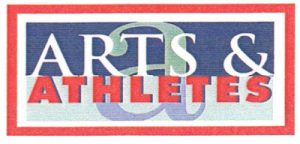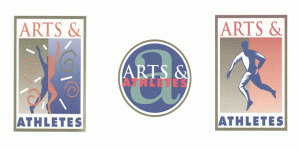Arts & Athletes
 In 1997, public funding for the arts teetered precariously, trapped between continuing hostility from Congress toward the NEA and the flight of foundation support away from cultural programs. While cutting direct benefits to the arts, legislators also became increasingly concerned with education standards, sending arts nonprofits scrambling to devise measures that would validate their place in school curricula as they sought money to pay for it. The fallout caught state arts agencies and their regional partners, including WESTAF, in a budgetary ringer.[1]
In 1997, public funding for the arts teetered precariously, trapped between continuing hostility from Congress toward the NEA and the flight of foundation support away from cultural programs. While cutting direct benefits to the arts, legislators also became increasingly concerned with education standards, sending arts nonprofits scrambling to devise measures that would validate their place in school curricula as they sought money to pay for it. The fallout caught state arts agencies and their regional partners, including WESTAF, in a budgetary ringer.[1]
Enter one of WESTAF’s quirkier projects, known as Arts & Athletes, which involved a new fundraising strategy called “cause-related marketing” [CRM] [2]. Arts & Athletes never really got off the ground, but it presented WESTAF with a potential new source of support for arts in education.
Arts & Athletes proposed a fundraising campaign featuring unpaid professional athletes who would plug two specific WESTAF programs directly supporting arts in education, Artists in Residence and TumbleWords. The program had to appeal to both potential corporate partners and high-profile athletes, while explicitly addressing consumers. Athletes would benefit from being seen as supporters of the communities in which they played, and companies would receive valuable local exposure wherever Arts & Athletes generated an audience.[3]
The athlete connection—whose celebrity status “will attract media for publicity about Arts & Athletes”—was critical. [4] Using unpaid sports celebrities would appeal to consumers who would see them endorsing a company’s product because they wanted to not because they were paid to.
To get it off the ground, Dick Zellner, WESTAF’s director of services, worked with Joe Ptacek, president of Integrated Marketing Strategies, Inc., to recruit professional athletes as spokespersons while trying to secure financing from long-term corporate sponsors. Ptacek and Zellner approached Julie and Bill Romanowski, at the time a middle linebacker for the Denver Broncos, to serve as chairs of the Arts & Athletes committee. Both indicated their willingness to recruit other athletes from professional football and other professional sports.[5]
WESTAF also approached several of its state arts agencies to test the concept.[6] The SAAs, in turn, would tap their education partners to flesh out the kinds of programs appropriate for their particular audiences.
However, despite enthusiastic responses from athletes and companies, efforts to close a sponsorship deal failed. At year’s end, WESTAF called a halt to pursuit of new prospects. All that remains are some artful logos and a trademarked name: Arts & Athletes.
[1] DiMaggio, Paul & Becky Pettit. 1999. “Public Opinion & Political Vulnerability: Why has the NationalEndowment for the Arts been such an attractive target?” Center for Arts & Cultural Policy Studies. By 1989, the NEA—snared in the disastrous end-of-decade Culture War that left the agency in shambles—faced a significantly diminished budget and a major reorganization. “In 1990, Congress increased from 20 to 27.5 percent the proportion of NEA program funds earmarked for state arts agencies and made other efforts to ensure that the agency would make no more controversial grants (DiMaggio 1991) p 9.”
Further, according to a Heritage Foundation report, a minority of elected officials objected to such spending, citing surveys showing there was plenty of private money for the arts without the NEA, whose access to public funds “discouraged charitable giving” and “lowered the quality of American art.” Laurence Jarvik. 1997. “Ten Good Reasons to Eliminate Funding for the National Endowment for the Arts,” pp 2-5.
[2] Ptacek, Joe & Gina Salazar. 1996. “Enlightened Self-Interest: Selling Business on the Benefits of Cause-Related Marketing.” p 1. CRM is corporate-speak for companies tying their products to a cause with the goal of increasing sales and polishing their corporate image while making a contribution to a nonprofit. Such marketing is about sales, not philanthropy, but it paid dividends to companies that previously entered into such relationships. American Express’s 1983 partnership with a project to restore the Statue of Liberty yielded a 28% increase in card usage during that period.
[3] Proposal. 1997. “WESTAF Arts & Athletes: A Cause-Related Marketing & Fund-Raising Program in Cooperation with State Arts Agencies.”
[4] Zellner, Dick & Joe Ptacek. June 1997. “Strategic Marketing Plan for WESTAF’s Arts & Athletes Program” draft. IMS Inc. p 3.
[5] Zellner, Dick. June 1997. Arts & Athletes Trip. Memo.
[6] Arizona, Colorado and Oregon were targeted for preliminary discussion because their sports franchises offered “the best opportunity to launch this type of program.” Zellner memo, April 1997.




